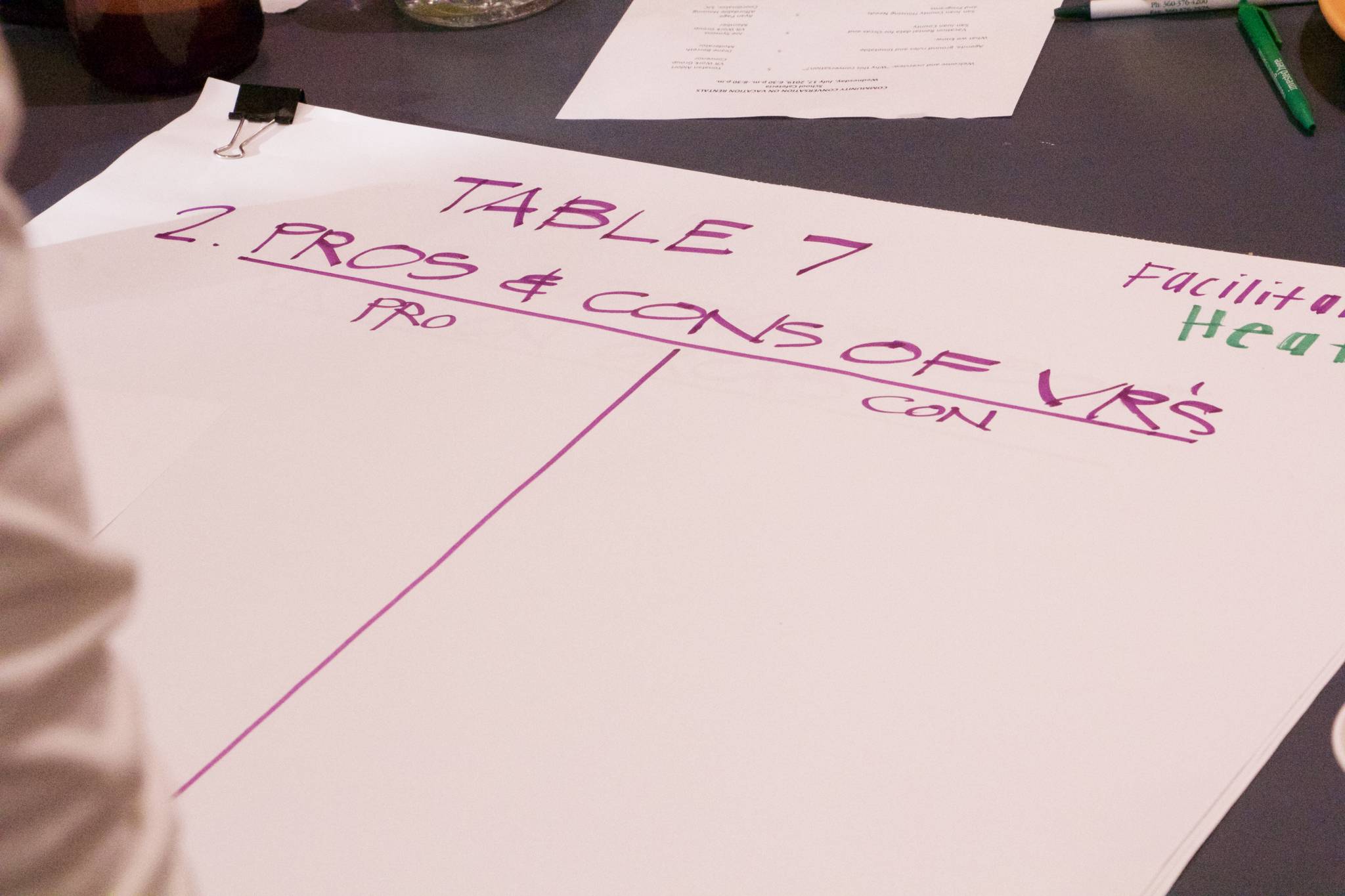Hundreds of citizens joined together to discuss vacation rentals and how they affect the islands.
The community conversation in the public school cafeteria on July 17 started out by asking three questions posed by Yonatan Aldort, one of the coordinators: what is the purpose of residential housing? How does one define commercial versus residential property? And, what do we want our community to be?
More than 200 attendees gathered around roundtables to share personal anecdotes, ask questions and brainstorm the pros and cons of Orcas vacation rentals. Facilitators appointed to each table documented responses on large sheets of paper. Organizers are now working to process this data. The next Community Conversation is slated for Sept. 25.
On May 2, the Eastsound Planning Review Committee voted to request from the San Juan County Council a year-long moratorium on vacation rental permits in Eastsound’s village core. Six members voted for the resolution while EPRC Chairman Paul Kamin abstained. Data from the EPRC shows more than half of the new structures being built in San Juan County are for second homes or vacation rentals.
“My preference would have been to do some more community engagement before the request of the moratorium,” Kamin was quoted at the time. “I feel we would have had a stronger case both with additional public support and with a little more data.”
The moratorium proposal was ultimately dismissed by the county, and a community workgroup formed in response, with islanders “eager to inform and educate the public,” Aldort said.
According to San Juan County public data, there are currently 1,115 vacation rental permits in San Juan County, 505 on Orcas. Of these, 51 percent are issued to people who do not live in San Juan County year-round. There is no data on illegal vacation rental accommodations.
“The current trend implies that within a few years, about 80 percent of new housing starts may be issued VR permits,” a slide presented by workgroup speaker Joe Symons stated. “In the current Growth Management Plan (2016-2036), the county projects no increase in the annual issuance of VR permits, however, since 2010 the annual number has tripled.”
San Juan County vacation rental data requires linkage to several other county databases to make sense of what is happening with permits. Symons and others have been working to parse through this data and present it in a digestible way, hoping it could inform deliberations and decisions, and lead to more enriching data collection from the county.
Other speakers included San Juan County Affordable Housing Coordinator Ryan Page, Orcas resident and vacation rental owner Suzanne Olson and Friends of the San Juans Staff Attorney Jennifer Barcelos.
Barcelos illuminated the impact of and response to vacation rentals in different communities worldwide, citing a recent Harvard Business Review study which concluded that globally when Airbnb rates increase, so do rents.
In comparing San Juan County to cities around the planet (Santa Monica, Carmel, Amsterdam, Kauai and Dublin), Barcelos illustrated that San Juan County is only one of a few others that do not have an annual limit on the number of vacation rental days.
Barcelos offered possible recommendations, including that “regulations should seek to limit the reallocation of housing stock from long-term to short-term rentals.” Her suggested regulatory approaches included a levy occupancy tax only on those who rent out entire homes for an extended period of time.
Community members discussed in small groups of eight to 10 for the latter half of the meeting. A website detailing community and county data will be available soon. Watch the Islands’ Sounder for updates.
“The people sitting at our table were all pro-vacation rentals,” said local VR owner Kit Nuzum. “We just want more locals to own them.”




